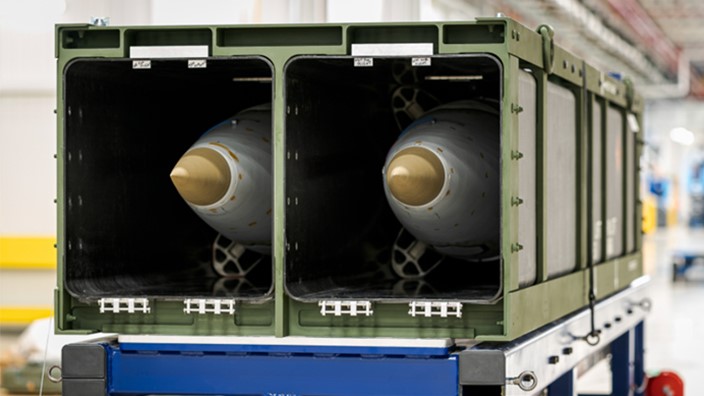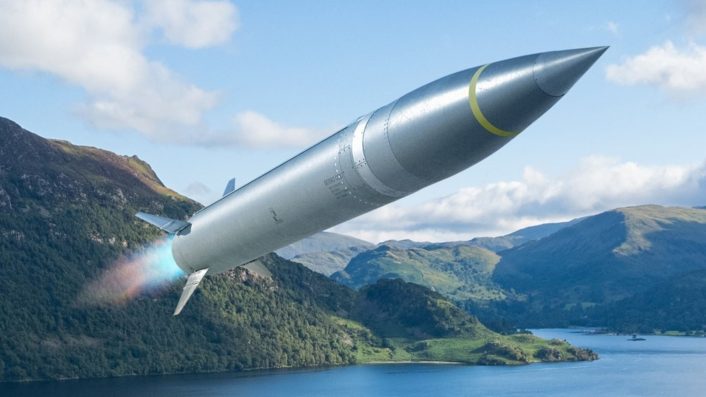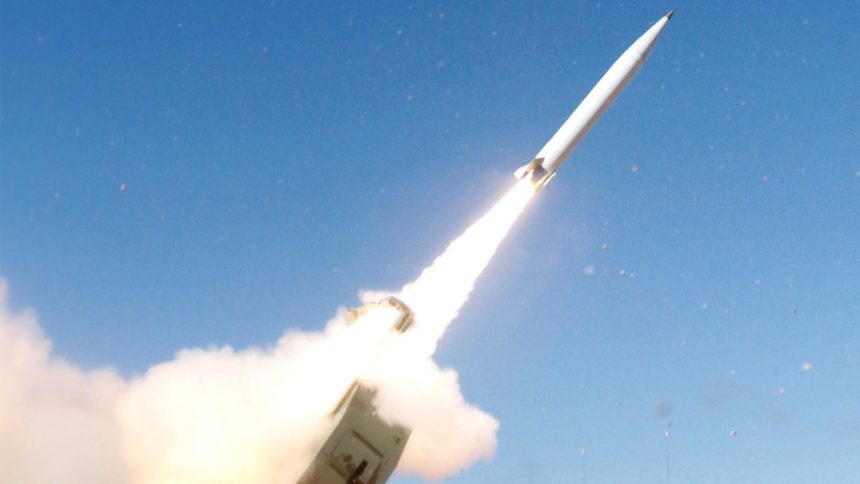Two PrSMs were launched in a mid-range flight against a set target proving the system’s continued accuracy and readiness. Meant to eventually replace the MGM-140 ATACMS, PrSM is the Army’s next-generation, long-range tactical guided surface attack weapon capable of neutralizing targets out to more than 400 km.
Lockheed Martin and the U.S. Army conducted another test of the PrSM (Precision Strike Missile) in a “double shot” salvo of two missiles at the White Sands Missile Range in New Mexico on Nov. 19, 2024, the company announced. This was a “production qualification flight test”, following the fourth EOC (Early Operational Capability) production contract awarded on Mar. 6, 2024.
The contract was worth $219 million and will cover the production of an unspecified quantity of EOC PrSM weapons. Lockheed Martin delivered the first missiles in Dec. 2023 following a successful production qualification test a month prior.
Meant to eventually replace the ATACMS (Army Tactical Missile System), PrSM has been described as the Army’s next-generation, long-range tactical guided surface attack weapon capable of neutralizing targets out to more than 400 km. The all-weather, guided missile can be fired from both the M270A1 MLRS (Multiple Launch Rocket System) and the M142 HIMARS (High Mobility Artillery Rocket System).
Regarding the latest test, the statement added that the two PrSMs were launched in a “mid-range flight against a set target proving the system’s continued accuracy and readiness.” The test saw the weapons being employed by a HIMARS launcher.
Defense News added that the test also “included having an operator in the cab to prove out soldier safety requirements during firing for the first time.” Also, the double shot capability was needed “per Army doctrine that requires two missiles to be fired at a target in operations in order to effectively guarantee hitting an incoming threat target.”
In its own statement, the Army said that preliminary results from the test indicate the PrSM Inc 1 missiles performed nominally across all test objectives, including predicted flight trajectory, range, lethality, engagement angle, and warhead performance.

PrSM and MDTFs
As the replacement for the MGM-140 ATACMS, the PrSM can strike air defense systems, missile launchers, command and control (C2) nodes, troop assembly/staging areas at ranges of more than 400 kilometers. Its open systems architecture allows accommodating future growth as new technologies become available. A key feature is its slightly thinner girth compared to the ATACMS, allowing space for an additional PrSM in an HIMARS pod, where only one ATACMS could fit.
The Army’s assistant secretary for acquisition, logistics and technology Doug Bush had previously said that “the PrSM will provide Joint Force Commanders with a 24/7, all-weather capability that will counter the enemy’s ability to conduct combat maneuver and air defense operations.” This suggests a SEAD/DEAD (Suppression/Destruction of Enemy Air Defense) role, with Lockheed Martin’s Sniper Networked Targeting Pod possibly having a role in the mix.
Along with the LRHW (Long-Range Hypersonic Weapon), the PrSM forms one component of the U.S. Army’s MDTF (Multi-Domain Task Force). The LRHW, also known as Dark Eagle, and the PrSM can reach ranges of 2,776 km and 400- 500 km, respectively. The other component is the MRC (Mid-Range Capabilities) Typhon system, comprising the SM-6 (Standard Missile-6) tweaked for surface strikes and the Tomahawk LACM (Land-Attack Cruise Missile). Both have ranges of over 1,500 km.
The MDTFs would be the U.S. Army’s key surface-to-surface missile systems, both in Europe and the Indo-Pacific. On Jul. 10, 2024, the White House announced the deployment to Germany by 2026 of all the four missiles. According to Defense News, the Army established the 2nd MDTF in Europe in 2021. Two other MDTFs are based in the Indo-Pacific theater with plans to set up two more for a total of five MDTFs.

Earlier tests and future ones
On Jun. 16, 2024, the Army’s 3MDTF, the 1-181 Artillery Regiment, used two PrSMs against a moving sea target for the first time as a part of the Valiant Shield 24 SINKEX (Sinking Exercise) in Palau in the Indo-Pacific. The missile was fired from an AML (Autonomous Multi-Domain Launcher), where it engaged a moving maritime target in conjunction with other Joint assets.
In Palau, soldiers from the 3rd Multi-Domain Task Force participated in the Valiant Shield 2024 Combined Joint Live Fire SINKEX on June 16, utilizing the U.S. Army Autonomous Multi-Domain Launcher (AML) and two Precision Strike Missiles (PrSM).
During the SINKEX, the AML was… pic.twitter.com/UTgHz5Pj2J
— Ian Ellis (@ianellisjones) June 26, 2024
This was “the first employment of both the AML and the PrSM outside of the U.S.,” an Army statement said. The prototype launcher will be capable of convoy operations, autonomous waypoint navigation, tele-operation, and remote launcher turret and fire control operation.
This too was a two-round salvo, as seen in a video of the test. The Army has planned four Increments for the PrSM, with the ones being tested now being the baseline versions. Increment 2 will have a new seeker for engaging moving targets; Increment 3 allows adapting submunition-type warheads; and Increment 4 is expected to have a range of 1000 km and above.
During the Nov. 13, 2023, Production Qualification Test 1 at White Sands, a PrSM Increment 1 missile fired from a HIMARS launcher, “performed nominally in terms of predicted flight trajectory, lethality, near-vertical engagement angle and height of burst.” Aviation Week reported in August that the U.S. Army wants a Sensor Fuzed Weapon capability in its Increment 3 phase.
US Army announced initial delivery of Precision Strike Missile Increment 1 Early Operational Capability missiles on Dec. 8. Launched from M142 HIMARS and M270A2 MLRS, it is capable of neutralizing targets at standoffs greater than 400 km.https://t.co/d7CQaQCzUO https://t.co/YcP9XkYZRV pic.twitter.com/EhHymeK55N
— Ryan Chan 陳家翹 (@ryankakiuchan) December 8, 2023
Along with the U.S. Marine Corps’ NMESIS (Navy Marine Corps Expeditionary Ship Interdiction System) that fires the NSM (Naval Strike Missile), the PrSM can be used to strike PLA Naval shipping from friendly Allied-held islands in the ECS (East China Sea) and SCS (South China Sea). Small, mobile teams of island-hopping Marines can disrupt PLA surface shipping to spread out and fight China inside its A2/AD (Anti-Access/Area-Denial) bubble.









